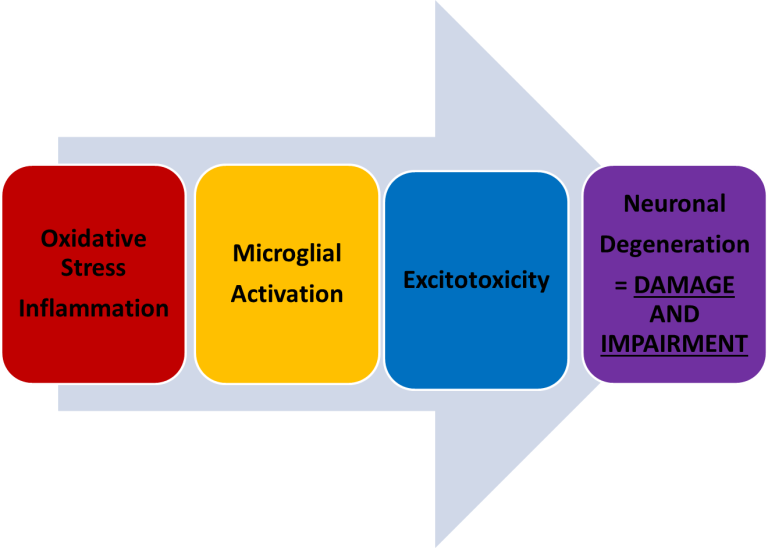Glutathione and Autism Treatment
Glutathione is important in the biomedical treatment of autism for four main reasons:
Firstly, glutathione acts as the body’s master antioxidant. Secondly, it plays a central role in detoxification of harmful substances. The third reason emerges from the latest research on glutathione regulating immunity and autoimmunity. Lastly, this key antioxidant also manages the brain chemical glutamate.
What is glutathione?
Glutathione (GSH) is the body’s master antioxidant made from amino acids L-cysteine, L-glutamic acid and glycine. Amino acids are protein building blocks and antioxidants protect cells from damage and/or death caused by free radicals. Free radicals are created when the body encounters a toxin like lead, and tries to neutralize it to prevent damage to cell structures, like the cell membrane. Glutathione is a major intracellular antioxidant and as a result plays a critical role in regulating the oxidative status inside the cell.

Glutathione’s role as an antioxidant:
Research has identified that in autism, glutathione status is significant. For instance, in some cases up to 80% of this important antioxidant has been depleted resulting in higher levels of what is called “oxidative stress”. Without sufficient glutathione free radicals can not be neutralized inside the cell and as a result cell membranes are damaged and inflammation leads to mitochondrial impairment. To clarify, glutathione plays a major role as an intracellular antioxidant, which dictates the “redox” status of the cell. The “reduction” or neutralization of free radicals is essential to cell functioning. Oxidative stress is the result of free radicals that outnumber antioxidants. Thus the term “redox” status reflects the reduction, oxidative stress balance in the cell. When free radicals surpass glutathione’s ability to reduce, the redox status is altered leading to oxidative stress which then leads to inflammation and a cascade called the cell danger response.
Furthermore, recent research has identified the role of greater oxidative stress in children diagnosed with autism and that using antioxidants can help improve symptoms of autism. Using glutathione in addition to the building blocks that make glutathione, in the treatment of autism symptoms helps to reduce oxidative stress and inflammation leading to improved sensory integration and reduction in self-injurious, repetitive and aggressive behaviours.
Glutathione helps maintain the status of other antioxidants:
Lastly, glutathione’s role as a reduction agent helps maintain other key vitamins that also act as antioxidants such as vitamins C and vitamin E. While both vitamins are very important for cell health, vitamin E has been shown to reduce the damage to the cell membrane and is used in biomedical treatment to support motor planning which is needed for optimal language, social, cognitive and motor skills.
Glutathione’s role in detoxification:
Glutathione plays a key role in detoxification reactions helping with phase II removal of toxins by the liver via that conjugation pathway. Furthermore phase II detoxification removes heavy metals, microbes and chemicals making glutathione an important player in the cell self-defense system.
GSH and heavy metals:
So, let’s look at the role heavy metals like lead and mercury play in contributing to autism risk and autism symptoms. Lead and mercury require two molecules of glutathione to be detoxified. Consequently, exposure to lead and mercury can very quickly deplete glutathione and exposure increases risk of autism and other neurodevelopmental disorders. Other heavy metals like aluminum, cadmium, arsenic, gadolinium barium, antimony etc. are also detoxified with the help of glutathione. In addition, research is now showing that incredibly small amounts of these metals can cause damage to cells. As a result there likely are no safe levels of these metals.
GSH and microbes:
Bacteria, yeasts and viruses have to be removed from the body after they are killed or immobilized by the immune system. Detoxification of microbial metabolites is highly dependent on glutathione status. Research has identified that children diagnosed with autism have altered gut flora. The gut flora create an ecosystem, termed the microbiome, that consists of bacteria, yeasts and viruses. Alternations in the microbiome consequently play a significant role in the pathophysiology of autism. Children diagnosed with autism have a different balance of microflora, and as a result changes in the way the brain and immune system are functioning.
GSH and chemicals:
Lastly, glutathione helps to remove harmful chemicals like pesticides, PCBs, bisphenols, fire retardants and phthalates. There are over 100, 000 chemicals polluting our air, water and land. Many of these toxins increase risk of autism, birth defects and neurodevelopmental disorders. Moreover, mothers exposed to higher levels of air pollution have higher rates of children with autism. Phthalates in plastics are also culpable. The most concerning part is that lack of research on how these chemicals impact human health. Harvard Public health researchers have linked a number of toxins to developmental delays and have recommended a global prevention strategy.
Glutathione’s role in governing immunity and autoimmunity:
Research is focusing more and more on diseases that show signs of inflammation and altered immune function and how this contributes to chronic health concerns. For instance, chronic inflammation in autism depletes antioxidants, like glutathione, leading to chronic elevations in oxidative stress. Chronic disorders, such as autism, are often accompanied by a very low antioxidant status. Altered glutathione status contributes to immune dysregulation, including autoimmunity.
Autoimmunity is when the body’s immune system becomes confused and begins to attack its own cells instead of focusing on harmful toxins or microbes. Therefore, glutathione plays a dual role in regulating the immune system with the ability to both stimulate immunity or inhibit an immune response to control inflammation.
Under physiological conditions where glutathione is low, cells are not regulate immune function. Where this becomes particularly important is the regulation of the immune system in the brain. Our brain is 15% neurons and 85% immune cells. That’s right! Our brain is mostly immune system! Optimizing brain function requires optimal production of glutathione.
Glutathione’s role in managing glutamate:
Glutamate is the most plentiful neurotransmitter and is therefore critical in supporting the brain. Due to the stimulation, or excitement, caused by glutamate, glutathione helps to strictly manage high levels. Glutamate activates the immune system in the brain. Remember, that the brain consists of 85% immune cells. These cells are called glia and will continue being activated if glutamate is elevated. Glutathione mops up excess glutamate, preventing it from making the brain excitable to the point of causing toxicity.

Many autistic symptoms including motor planning impairment and sensory issues are caused by immunoexcitotoxicity.
“Immuno” because the immune cells are triggered. “Excito” because the brain is too excited with high glutamate. “Toxicity” because too much glutamate changes the way the brain is functioning and can even contribute to damage and cell death.
Immunoexcitotoxicity is the term researcher and neurologist, Dr. Russell Blaylock uses to describe the changes in the autistic brain caused by impaired management of glutamate by glutathione.

References:
A, Minarini. N-acetylcysteine in the treatment of psychiatric disorders: current status and future prospects. Expert Opin Drug Metab Toxicol. 2017 Mar;13(3):279-292. doi: 10.1080/17425255.2017.1251580.
AM, Khemakhem. Novel biomarkers of metabolic dysfunction is autism spectrum disorder: potential for biological diagnostic markers. Metab Brain Dis. 2017 Aug 22. doi: 10.1007/s11011-017-0085-2.
A, El-Ansary. Predictive value of selected biomarkers related to metabolism and oxidative stress in children with autism spectrum disorder. Metab Brain Dis. 2017 Aug;32(4):1209-1221. doi: 10.1007/s11011-017-0029-x.
LK, Wink. A randomized placebo-controlled pilot study of N-acetylcysteine in youth with autism spectrum disorder. Mol Autism. 2016 Apr 21;7:26. doi: 10.1186/s13229-016-0088-6
M, Al-Askar. Postnatal treatment using curcumin supplements to amend the damage in VPA-induced rodent models of autism. BMC Complement Altern Med. 2017 May 10;17(1):259. doi: 10.1186/s12906-017-1763-7.
MH, Rahbar. The role of drinking water sources, consumption of vegetables and seafood in relation to blood arsenic concentrations of Jamaican children with and without Autism Spectrum Disorders. Sci Total Environ. 2012 Sep 1;433:362-70. doi: 10.1016/j.scitotenv.2012.06.085.
